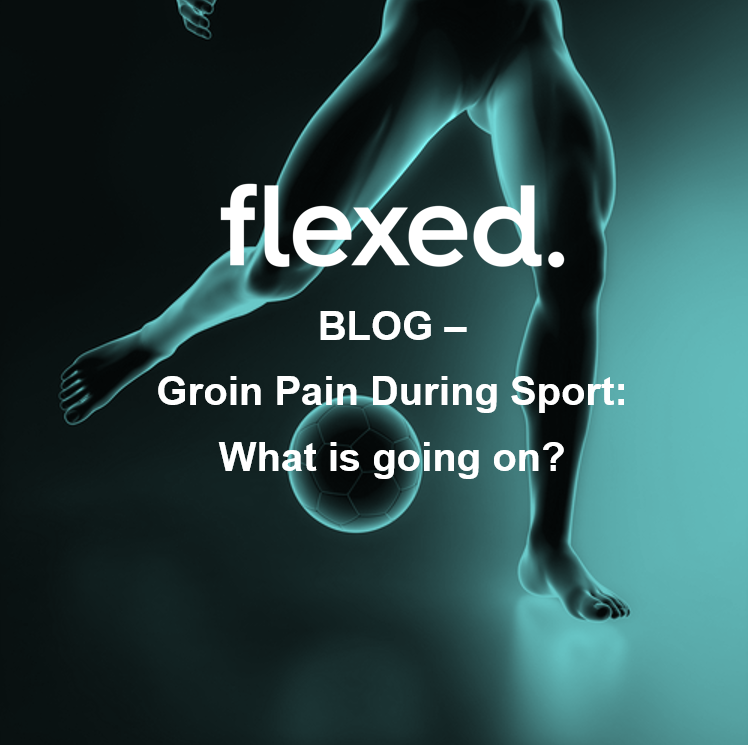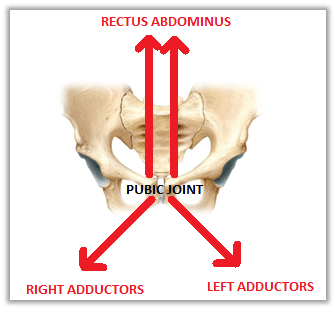Groin Pain During Sport – What is going on?

With winter sports seasons starting in the coming weeks, this blog will discuss a relatively common condition that arises this time of year, Osteitis Pubis (OP). Although it is unlikely that the incidence of OP has risen significantly during this time, the clinical presentation of the condition has. This is most likely due to better understanding of the biomechanics of the lower limbs and the force transfer between the legs and the pelvis of athletes playing high intensity, physically demanding sports. The improvements in diagnostic imaging such as MRI and increased accessibility of these diagnostic modalities has also likely contributed in the increased clinical diagnosis of this condition.
What is it?
As the name translates from Latin, osteitis pubis is the inflammation of the Pubic Bone or Pubic symphysis. The Pelvis is a complex structure that is comprised of 3 main bones, each articulating with the other to provide a strong yet flexible base for the muscles that attach into. At the back, the pelvic bones join with the sacrum to form the Sacro-Illiac Joint (SIJ). At the front, the 2 pubic bones join and form the symphysis, providing the attachment of the rectus abdominus muscle (above) and the lower limb adductors (below).
Due to the number of different muscles that attach into or around the pubic symphysis, the pubic joint is subjected to a lot of force transfer. Usually, the joint is strong enough to withstand these forces. However, players of physically demanding, high impact sports such as soccer and football can develop large differences in the length and tension (strength) of these muscles. This is especially true at the start of the new season, where within a short amount of time, the muscles of the lower limb are overused after a period of rest.
Over time, these imbalances increase the shearing (pulling) forces on the pubic symphysis. As with any other joint, this increased shearing can cause inflammation of the tendons of the abdominal or adductor muscles +/- the ligaments that stabilize the symphysis. The resultant inflammation of the pubic symphysis can cause severe pain, and if left untreated, in more chronic cases may develop into erosions or cysts within the joint.
What can we do?
Whilst diagnosis of OP seems relatively straight forward, treatment is usually far more complex. There is always a period of rest from activity (which can differ markedly between cases). This allows the initial inflammation to reduce before a graded rehabilitation program can be implemented.
There are then a number of factors that need to be addressed for a personalized rehabilitation program to be developed. A good rehabilitation program with typically comprise the following components:
- Rest to unload painful structures and reduce inflamed tissues.
- Regain pain free function of the muscles which stabilize the pelvis.
- Regain normal length and strength of the pelvic muscles.
- Correct any abnormal lower limb biomechanics.
- Resume pain free, gentle activities that avoid excessive loading on the pubic symphysis. (e.g. exercise bike)
- Regain cardiovascular fitness via cross training rather than running.
- Commence gentle loading activities such as straight line running.
- Commence cutting and turning drills.
- Commence kicking (once all other drills have been resumed).
- Graduated return to play.
Remember, OP is an inflammatory condition that affects one of the most important joints for the muscles of the abdomen, groin and lower limbs. As the ligaments get damaged and inflamed, without adequate rest they will take longer to heal than other structures, thus, early detection of OP is the most significant factor for decreasing time on the sidelines. With so many muscles and contributing factors to address, the sooner you get it seen to by your physiotherapist, the less time you will be out this upcoming winter season.
So, if you are experiencing any signs of groin or lower abdominal pain having just recommenced your pre-season training, come and see one of our physiotherapists to get you back on track as soon as possible and help prevent long term complications.
 Vatche Douzmanian
Vatche Douzmanian
Physiotherapist


